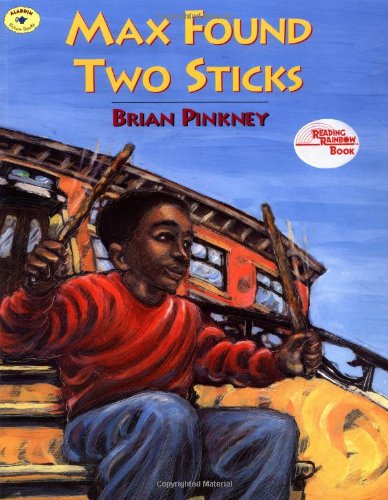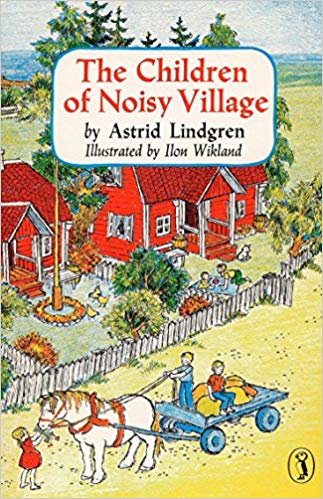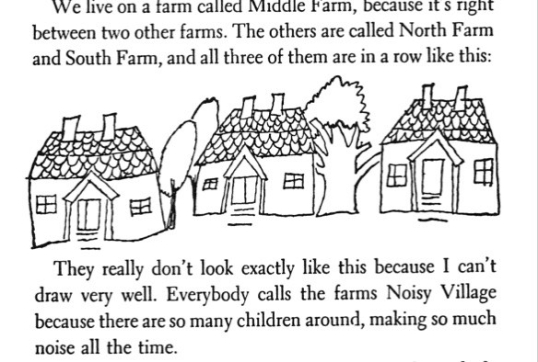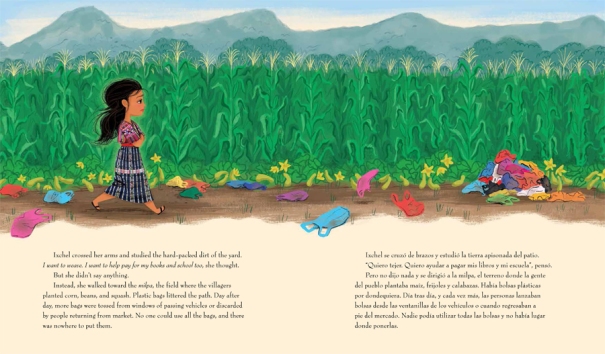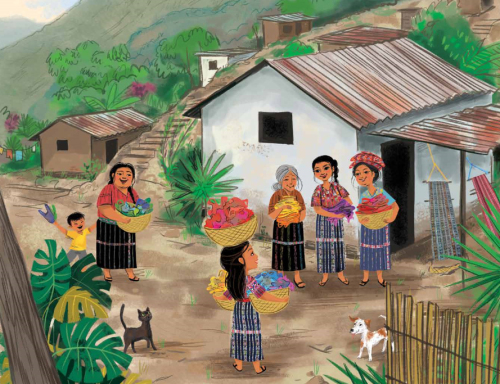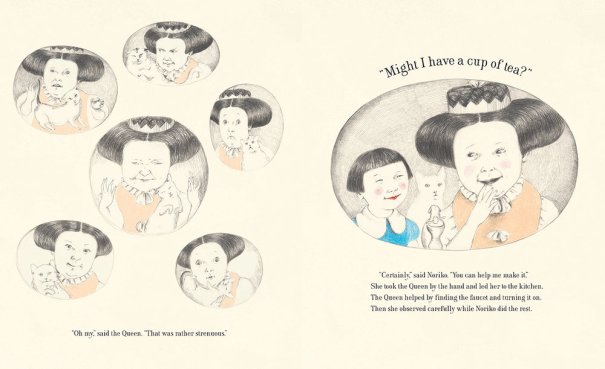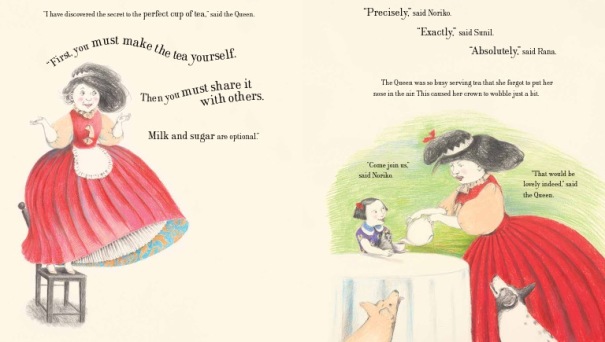When my husband and I decided to homeschool our daughter, we spent a significant amount of time meditating on the theories and philosophies behind the various popular home education methods. Charlotte Mason? Waldorf? Montessori? Classical? Unschooling? Traditional? The list goes on and on. We read books, made many lists, and decided that unschooling would suit our precocious preschooler’s curiosities, our lifestyle, and our beliefs about childhood development and education.
In my mind’s eye, I envisioned taking walks together, seeing our daughter notice a funny bug or a leaf and asking questions. I blissfully imagined diving into the library to find out the answers and then to be carried away on a tangent. I pictured us making messes and creating together without boundaries or rules. Without a map.

But when I told my daughter that she was now in preschool and that her preschool was whatever she wanted it to be, she was unimpressed. “I want to see,” she said in her small voice.
So I began researching “preschool homeschool curriculum” which I promise you is not a fun search as much as it is heart-withering. Much of the homeschool curricula that surfaces on the internet reads something like this:
- 15 minutes coloring book
- 15 minutes lacing cards
- 2 times singing the alphabet
- Snack
- Read stories
- Counting
The idea of making my own active child sit still for “15 minutes of lacing cards” was more than I could bear.
I reached out to Facebook for suggestions and was finally pointed toward a curriculum that was described as “gentle and Waldorf inspired” by several people. It seemed like another dead end, but I looked anyway.
What I found was not a rigid, sedentary schedule, but a seasonally thematic recipe for a rhythm-focused preschool or kindergarten experience. Wee Folk Art, by Kimera Wise and her daughter Michelle Bonney, is a multifaceted endeavor involving crafting patterns for homemade delights and a beautiful set of home school curricula.
Simple Seasons is a four-part collection of seasonal curricula that can be used for preschool or kindergarten (or even 1st grade if you add on to it). All four parts are short PDFs of 12 or so pages, all in color, all organized intuitively and clearly. And all of them are available for free (if you don’t mind some out-of-print books), or for $6 a pop with updated books. I purchased all four pieces, for $24 which seemed like a deal considering we would use them for two years.
So, when I handed my daughter the binder and watched as her small hands turned the pages, I was mesmerized. Her whole being seemed to light up, her eyes grew brighter, and she said “Are we going to do all these things?” Yes, I answered her, and she gave me a hug, her little arms wrapping around my hips tightly.
There is power in this curriculum, I thought.
Each Simple Seasons curriculum has an introduction with explanations, schedule suggestions, and optional directions. Each has a chart that outlines the Primary Story (a picture book), A “Digging Deeper” book (a nonfiction picture book related to the primary story that covers a science or math concept or a historical person or event), a matching project (science, math, art, or a combination), occasional field trip suggestions, and a letter of the alphabet to focus on.
The books that are used in Simple Seasons have been, for the most part, found right at our local library. Some we have purchased, and almost all were purchased used. The art supplies have been easy to find and mostly inexpensive.
Developmentally, children in their preschool years often benefit from learning about the world that they are directly seeing and experiencing. This is the world they have questions about, and this is what they want to explore. Thus, a seasonally focused list of books and projects was meaningful to my learner. This does not mean she never had other interests. Once we spent a month learning about lighthouses because she asked. She has never stopped learning about dinosaurs. We spent two months on the Middle Ages during the winter, and that interest continues as well. Simple Seasons is broad enough to offer freedom, and the schedule is wide-open for you to customize to your family’s own needs. With just two books and a project or three, we had plenty of time to dive in to myriad other interests, and yet the Wee Folk Art books were always pulled off the shelf frequently to read aloud.
There are three poems that are suggested for memorization for each 12 week quarter. They include classics like “Little Boy Blue” (traditional), “Stopping by Woods on a Snowy Evening” (Robert Frost), and “The Caterpillar” (Christina G. Rosetti). My daughter really enjoyed listening to and memorizing these poems the first year, but she did not do the same poems again her second year because she still remembered everything she learned. We supplemented by adding a daily “morning verse” her second year, and adding a weekly Poetry Tea Time á la Brave Writer.
In addition to the poem, there is a suggested weekly narration, which we opted to complete. Once a week, we would sit down together somewhere (table, outside, couch, floor) and my daughter would tell me what happens in the primary story, and I would write down her words verbatim. If she wanted, she would draw a picture. This was the only piece of “work” she would do. The rest of preschool was reading, exploring, playing, singing, and working on skills at her own pace and fueled by her own interest. Thus, Simple Seasons really hit that sweet spot for preschool where we could find freedom within a larger structure.
A Closer Look at Each Season
Harvest Time, which is where we began, looks at Autumn phenomena and holidays typical to the east coast of the United States. It would work well in any part of the world if you are curious about leaves that change color, the transition from summer to fall, tractors, pumpkins and apples. Of course, nothing is ever perfect and we did need to make some changes for our family and our beliefs. Wee Folk Art is written by a Christian family, and while it is mostly a secular offering, there were a few things that needed to be adapted for our secular home school experience. In Harvest Time, the poem “Johnny Apple Seed” references God throughout. Changing the word “God” to “Earth”, however, easily fixed this problem. Indeed, the poem is richer and more beautiful with this change.
We loved looking at Leaf Man by Lois Ehlert, and we enjoyed making leaf people of our own with an iron and wax paper. The pumpkin muffin recipe she includes in curriculum is delicious and has become a tradition for the autumn.

The problem with Harvest Time, in my opinion, was the white washed view of Thanksgiving that is presented in the texts suggested for that week. We disregarded those entirely, and used books that represented the Native American people—hopefully—with more agency, compassion, and truth. We used Giving Thanks: A Native American Good Morning Message by Chief Jake Swamp, The Very First Americans by Cara Ashrobe, and Squanto’s Journey: The Story of the Very First Thanksgiving by Joseph Bruchac. Instead of making turkey place mats, we made food to share with our family on Thanksgiving.
Winter Wonderland, in Vermont, starts off just as the name suggests. Yay! Snow! We looked at snow crystals with a magnifying glass and learned about how it all happens. We read about bears, about hibernation, and making snowmen. Sometime after week four, my daughter (and I) lost steam both years. I don’t necessarily think this is a Simple Seasons issue, so much as a Vermont issue. Winters are LONG. We are COLD. Both years we ditched this at different points and explored other interests. The first year was a mash-up of various things my daughter was curious about, and the second year was a structured Prehistory (dinosaur and cave person) unit that she was passionate about.
Winter wonderland features several projects that we loved and used, though. We spent a week studying Ireland and exploring my daughter’s Irish heritage each year (adding step-dancing performances to the field trips and baking soda bread), and we spent more than a week learning about maple syrup (we live in Vermont after all!) Winter Wonderland includes several holidays with saints, and we did not read those books, as I could not find options that were objective on the topic. We still celebrated Valentine’s day by making cards for friends, and the Jan Brett/Eve Bunting book suggested in the curriculum is both beautiful and humorous.

Spring B’s is the most elegant, well-organized and engaging of the Simple Seasons units. It begins with Aesop’s fables for literature and birds for science. Making and painting clay birds is a favorite project, and one will continue to do for many years to come. My child loved comparing her bird this year to her bird last year and seeing how much her modeling skills had improved. (In fact, she loved the ability to compare her narrations and her projects to see how she had grown.) After three weeks of bird study, the curriculum moves to two weeks of bunnies, three weeks of gardens and plants, two weeks of bees, and two weeks of butterflies. There is a distinct lack of Christian influences in Spring B’s, and most of the books are wonderful and easy to acquire. The one exception being What Makes a Bird a Bird which is out-of-print and difficult to find. The other book to take note of is The Very Hungry Caterpillar by Eric Carle. Although this book is a classic, it is completely scientifically inaccurate (butterfly larva do not spin cocoons!). I would recommend looking at your local library for books about butterflies. There are so many.
Puddles and Ponds, where my daughter is right now, is the summer (and for her the last) quarter of Simple Seasons. We are spending time observing the weather (as I write this she is standing on the sheltered porch witnessing a heavy downpour with her father). We have been looking at tadpoles and frogs, watching the milkweed grow taller and checking for monarch eggs—like many families we spend the summer raising and releasing monarchs—and gardening. Puddles and Ponds is the low-key, relevant, and enjoyable ending to our academic year. Learning about thunder and lightning has made her unafraid of storms, while also teaching her storm safety. She knows where to look for a rainbow in the sky, and why clouds get so dark before it rains. At the local science museum, she impressed the staff with her knowledge of turtles, and feels comfortable getting muddy and asking questions. In the end, this is the preschool experience I wanted for her. She had a map, but no set pathway. She forged her own way through her preschool years, using the books and projects both as jumping off places and immersive opportunities.

Because of Wee Folk Art, my daughter had a truly magical, nature-based, mostly outdoor preschool life. She would wake up in the morning excited to do school and pull the binder off the shelf. She would show her family and friends what she was working on, and still loves flipping through her past narrations and art projects. Her ability to summarize and pull together a cohesive account of an event or story is remarkable, and has been useful on more than one occasion. I believe the weekly narrations she completed helped hone this skill, and will continue to help her as she grows her writing and summarizing in kindergarten. If anyone knows me, they know I cannot stand busy work for children (or anyone), and this program does not have anything that would count as such.

I have considered, probably a million times, continuing with Simple Seasons for one more year and adding in more math and science. But I know in my heart that this would not serve my daughter, and she needs to continue her journey with a different program. Using curricula does not mean a rigid or traditional schedule. It could for some, but for us it means opportunities, ideas, options, and inspiration. She is looking forward to beginning Blossom & Root Year One in September, and I am thrilled to be able to see where it takes her.


